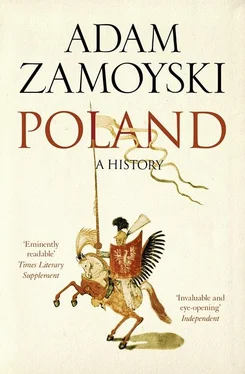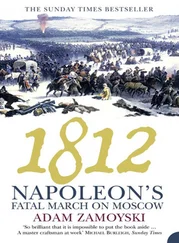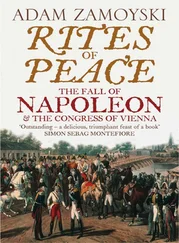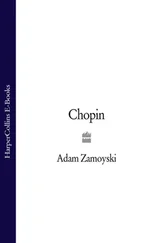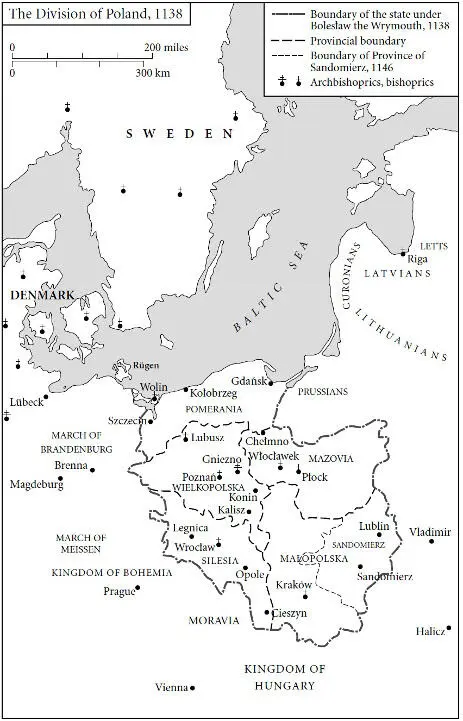
The last years of his reign brought defeat during expeditions in support of his Hungarian allies, provoking renewed Bohemian invasions. A group of nobles took advantage of the situation, forcing Bolesław to make a political testament which carved Poland up into duchies. Each of his five sons was to rule over one of these. Pomerania, whose dukes were closely related to but not of the main Piast line, was given equal status. The eldest son, Władysław, was to reign in the small but theoretically paramount duchy of Kraków as well as his own and exert suzerainty over the others. Thus when Bolesław the Wrymouth died in 1138, the country embarked on a political experiment designed to compromise between regionalist tendencies and an underlying sense of kinship and political unity.
Ironically, considering the frequent interruptions in the succession and the consequent fragmentation of the realm, this sense of unity was based primarily on the Piast dynasty. They had established over eighty castle-towns by the end of the eleventh century and endowed market towns with royal charters granting rights and protection. They encouraged the replacement of barter with their own coinage, and provided the security necessary for the development of international trade routes through the country. Cities such as Kraków, which became the capital in 1040, Sandomierz, Kalisz, Wrocław, Poznań and Płock flourished.
Another unifying element was the Church, which was instrumental in the spread of new technologies and of the Romanesque style in architecture. It was also central to the spread of culture and education, providing as it did technical expertise, administration and schooling for would-be priests and young noblemen. The arrival of the Benedictines, whose monastery at Tyniec on the Vistula dates from the second half of the eleventh century, and later of the Premonstratentian and Cistercian orders, added impetus to this process. Most of the cathedrals had schools attached to them, and through the institution of the Church it was possible for Polish students to travel to other counties in search of learning. A local Latin chanson de geste made its appearance, and between 1112 and 1116 the first Polish chronicle was written in Kraków by Gallus, probably a Benedictine monk from Provence.
A distinction must be drawn between the great impact of the Church’s educational and even political activities, and the con—siderably lesser one it produced at the strictly religious level. Pagan cults survived the official conversion of the country in 966, and the next two centuries witnessed several major revivals, during which churches were burnt and priests put to death. The pagan survivals were particularly strong in areas such as Pomerania, which maintained a measure of autonomy in the face of pressure to submit to either Polish or Imperial overlordship.
The Church could do little about this in the face of a general lack of zeal, which is well illustrated by the Polish response to Rome’s summons to the Crusades. Apart from Prince Henryk of Sandomierz, few heeded it. Duke Leszek the White explained in a long letter to the Pope that neither he nor any self-respecting Polish knight could be induced to go to the Holy Land, where, they had been informed, there was no wine, mead, or even beer to be had. There were other reasons for staying at home, since there were troublesome pagans on Poland’s own frontiers in the shape of the Prussians and Lithuanians. But little was being done to convert them, and this lack of zeal was characteristic. A major motive propelling European knights across the seas to fight crusades in Palestine and the Baltic (and settlers to follow them) was the population explosion of the Middle Ages which produced overcrowding in some areas. The far from populous Poland felt no such need for expansion, and her rulers welcomed the immigration of Jews, Bohemians and Germans who provided useful services.
The realm continued to fragment after the death of Bolesław the Wrymouth in 1138 had transformed it into five duchies. The eldest of his sons, Władysław, made an attempt at reuniting it from his position as ruler of Kraków, but he came up against the resistance not only of his brothers but of most of the local lords as well. Over the next hundred years successive dukes reigning in Kraków proved less and less able to enact the formal suzerainty which went with the position, and eventually abandoned the attempt altogether. The various branches of the royal family established local dynasties, in some cases subdividing the original five duchies of Wielkopolska, Mazovia-Kujavia, Małopolska, Sandomierz and Silesia into smaller units in order to accommodate their offspring.
There was more to such fragmentation than sibling rivalry. Regional lords and the larger towns yearned for autonomy, and the trend towards devolution went hand in hand with a demand for wider power-sharing. Władysław of Wielkopolska, also known as Spindleshanks on account of his bony legs, made a valiant attempt to reassert his authority as Duke of Kraków, but powerful barons forced him to grant them substantial prerogatives by the Privilege of Cienia in 1228, thirteen years after a similar document, the Magna Carta, had been extorted from a king of England.
There was nevertheless a marked difference between the barons of England and the magnates of Poland. The power of an English or French lord at this time was held from the crown and fitted into a system of vassalage. This feudal system was never adopted in Poland, except with respect to some nobles who had migrated from western Europe. This set Polish society apart from the rest of the Continent in fundamental ways.
The highest estate were the gentry, the szlachta , who inherited both status and land. They were obliged to perform military service for the king and to submit to his tribunals, but they were the independent magistrates over their own lands. They upheld the customary laws of the country, the Ius Polonicum , based entirely on precedent, and resisted attempts at the imposition of foreign legal practices by the crown. Beneath the szlachta were a number of estates, including the włodyki , who were knights without noble status, and the panosze , who formed a kind of yeoman class. The peasants were mostly free and able to rise to a higher status. While the land they tilled belonged to the sovereign, they enjoyed defined rights. A small number were enserfed, but these gained greater personal freedom during the first half of the thirteenth century, and were not generally tied to the land as in western Europe. The adoption of the three-field system at the beginning of the thirteenth century and the agrarian boom it brought about differentiated between those who had land and those who did not. Those who did grew richer, those who did not were revealed to have nothing to offer except their labour. Thus while they gained greater personal freedom and legal protection, the poorer peasants were caught up in the mesh of economic bondage.
The cities were, literally, a law unto themselves. Most of them had been either founded by or endowed with special charters which gave them a measure of autonomy. As they grew, they attracted foreigners—Germans, Italians, Walloons, Flemings and Jews—whose presence served to increase this independence. The Germans imported with them the Ius Teutonicum , which was first adopted for Silesian towns in 1211, and subsequently, in the modified form of ‘Magdeburg Law’, for others all over Poland. These laws, which regulated criminal and civic offences and all trade practices, meant that the area within a city’s walls was both administratively and legislatively in another country from that lying without. The citydwellers evolved as a separate class having nothing in common with the others. The same was true of the growing Jewish community, which was granted a royal charter by Bolesław the Pious in 1264, the Statute of Kalisz. This recognised all Jews as servi camerae (servants of the treasury) and afforded them royal protection. It was the first of a number of such privileges which were to turn them into a nation within a nation.
Читать дальше
